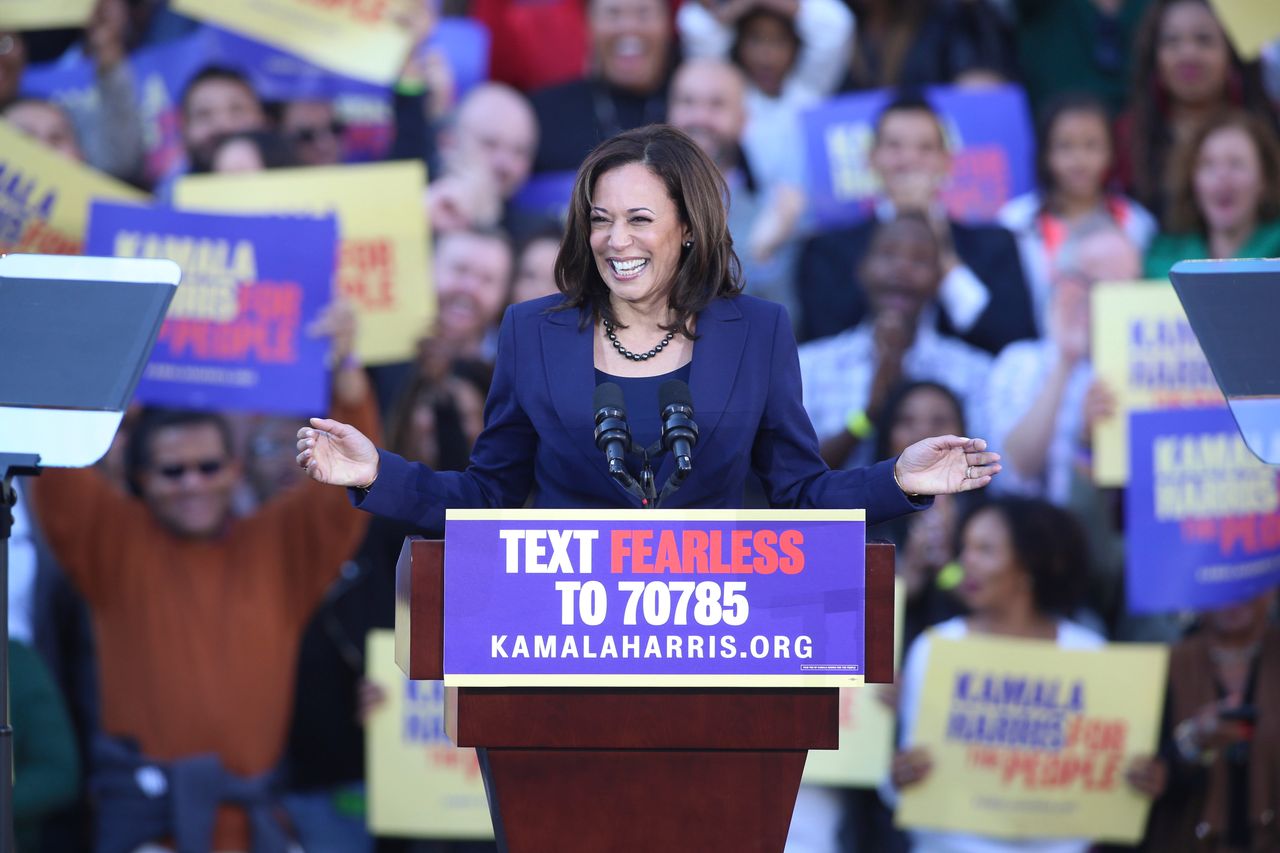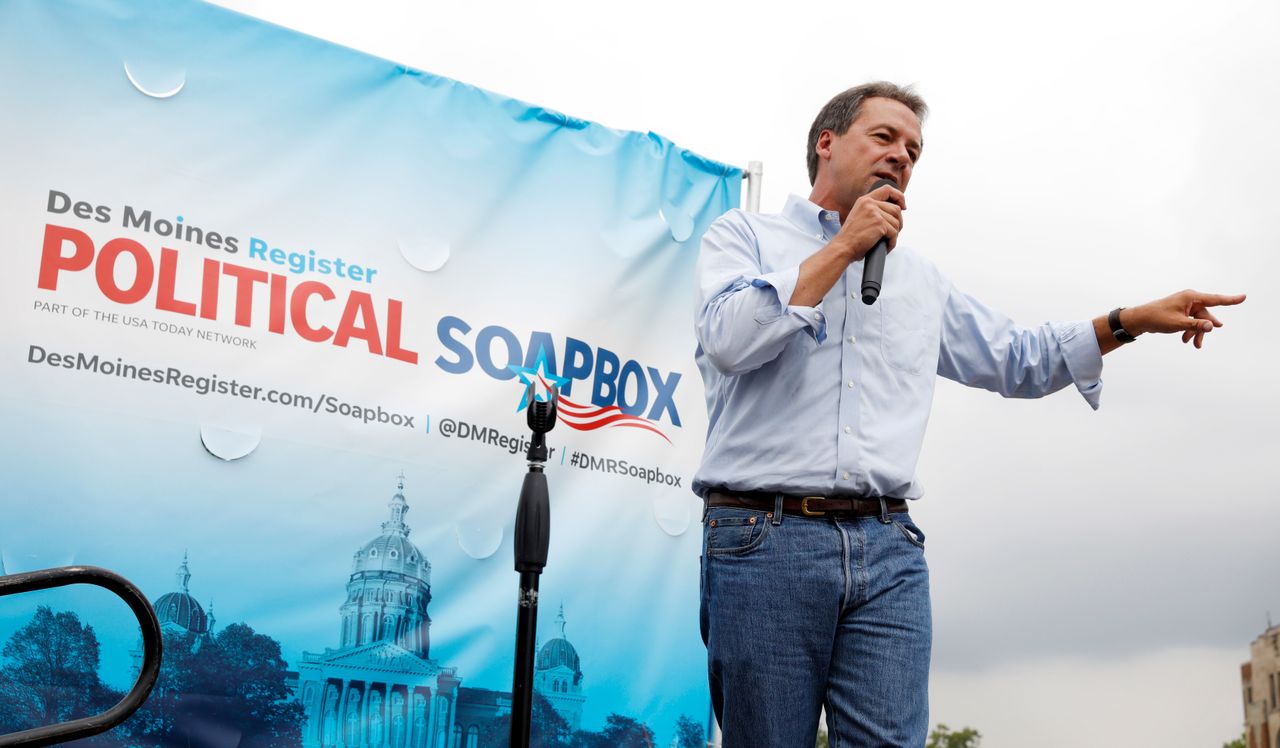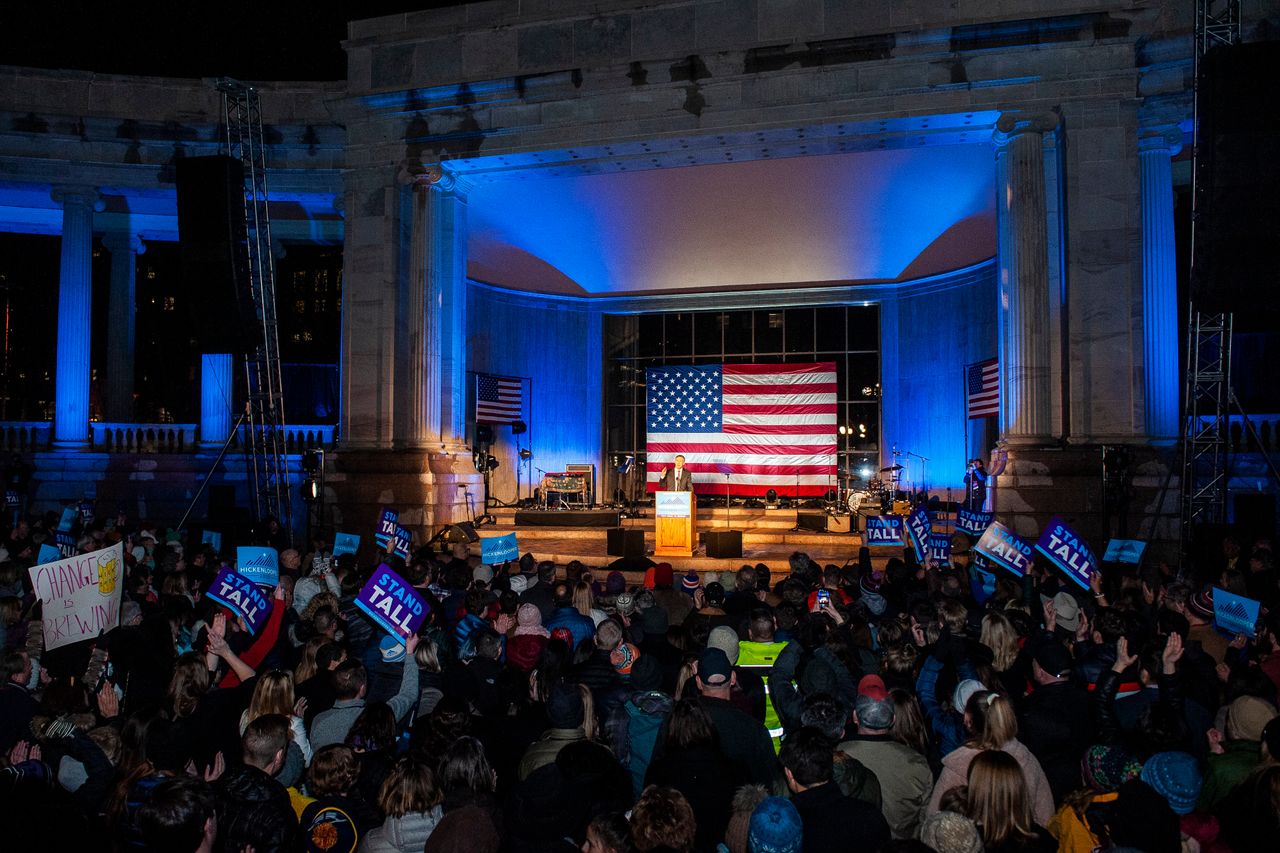DENVER – The first thing former Colorado Gov. John Hickenlooper mentioned when he launched his presidential bid in a 20-minute speech at Civic Center Park wasn’t a policy idea he was proposing or a person he had helped, but a location.
Hickenlooper, who parlayed his ownership of a popular brewery into becoming mayor of the Mile High City and then governor of the state, boasted he was delivering the speech “against the backdrop of the American Rockies,” he said, “in the heart of the American West.”
There are plenty of reasons Hickenlooper is an unlikely candidate – he’s perhaps too moderate for the modern Democratic Party, he’s little known outside of Colorado, and he’s a white man when the party’s primary electorates are increasingly picking women and people of color as their nominees.
But the way Hickenlooper would most stand out from past Democratic presidential contenders? Simple geography. As a Coloradan, Hickenlooper hails from the West. No politician representing the region has ever become the Democratic Party’s presidential nominee. (President Barack Obama was born in Hawaii, but represented Illinois in the Senate.)
Even candidates from the western part of the country have been rare. In the four open Democratic presidential primaries this century – in 2000, 2004, 2008 and 2016 – just two candidates from the West have run: former New Mexico Gov. Bill Richardson and former Alaska Sen. Mike Gravel. The last western candidate to receive delegate votes at the Democratic National Convention? Former California Gov. Jerry Brown back in 1992.
In 2020, thanks to a more wide-open field than the party has seen in decades, that’s changing. The party’s center of power is beginning to shift from New York and New England into the rapidly growing Mountain West states and ultra-populous, uber-diverse California. Four Democrats from the West have already entered the race, and three more are considering it.
“The Democratic Party’s center of power is beginning to shift from New York and New England into the rapidly growing Mountain West states and ultra-populous, uber-diverse California.”
There’s a pair of Californians: Sen. Kamala Harris — one of the top contenders for the nomination — and Rep. Eric Swalwell. There are two Mountain West governors: Hickenlooper and Steve Bullock of Montana. In the Pacific Northwest, Washington state Gov. Jay Inslee has launched a climate-focused bid.
Another Coloradan, Sen. Michael Bennet, has been touring the early primary voting states. And America’s westernmost state, Hawaii, is contributing a candidate in Rep. Tulsi Gabbard. (Other potential candidates from the West, including megadonor Tom Steyer of California and Oregon Sen. Jeff Merkley, have decided against running.)
“I think for too long, the party has ignored the West,” Richardson told HuffPost in a phone interview. “We’ve been a bicoastal or even northeastern party. That hasn’t worked well; we’ve lost.”
(A brief methodological aside: HuffPost is using the U.S. Census Bureau’s 11-state definition of the West, which does not include Texas. But much of the analysis here could also apply to two Texans: former Rep. Beto O’Rourke, who has not declared if he’s running, and former Housing and Urban Development Secretary Julián Castro, who has.)
So many candidates from west of the Rocky Mountains are running thanks to a host of factors this cycle, including a wide-open field and the belief that the general election may be ready for something different than the 2016 race, which gave the country a choice of two candidates from the New York City area.
Here’s why we’re seeing so many Democratic presidential candidates from the West:
1) No clear front-runner. Unlike in 2016, there’s no clear person with the edge, which has led to more candidates of all stripes.
“Last cycle, we saw a coronation,” said Dave Jacobson, a Democratic consultant in California, referring to Hillary Clinton’s relatively easy primary win. “Now, people want the complete opposite of that.”
2) Change in the primary schedule. The second major change contributing to more western candidates was California’s decision to move its primary from June to early March, making it one of the first states to vote after the big four early states of Iowa, New Hampshire, South Carolina and Nevada.
“In the past, the presidential calendar has favored candidates with financial strength, with population strength, because of the early primaries,” said Richardson, whose campaign fizzled after the early states of Iowa and New Hampshire. “Now that the calendar has shifted, western candidates have a shot.”

3) Democratization of fundraising. It used to help candidates to have strong ties to the traditional Democratic fundraising bases in Washington, D.C., New York, Boston and Chicago. But with the rise of small-dollar online donations, candidates with geographic bases far from the East Coast can raise the money necessary to compete.
4) A growing, diverse electorate in the West. The party is gaining strength in the West, fueled by booming populations of young, college-educated and Hispanic residents – the population of the region is now just two-thirds non-Hispanic white. More than one-quarter of the House seats that Democrats took from Republican control in 2018 were from the West, as were both the Senate seats Democrats won from the GOP.
In the past two years, Democrats picked up total control of four state governments in the region: Washington state, New Mexico, Nevada and Colorado. The latter three states were swing states not long ago, but all three have a deep blue tint today, and Democrats view Arizona’s desert as fertile ground in which to grow the party.
And that means Democrats coming from the region ― especially Harris, who came through the progressive crucible of Bay Area politics before winning three statewide elections in California ― are practiced at appealing both to diverse electorates and the party’s left wing.
“They had to climb the ranks in a very tough system within their own party,” Law said. “Once you make it through that crucible, you’re very formidable.”
“I think for too long, the party has ignored the West. We’ve been a bicoastal or even northeastern party. That hasn’t worked well; we’ve lost.”
- Former New Mexico Gov. Bill Richardson
Harris is seen as one of the front-runners in large part because of her success in appealing to African-Americans, Latinos, Asian-Americans and progressives. All of these groups will be key voting blocs in both California and the early caucus state of Nevada. And Harris’ time in Sacramento and San Francisco has given her plenty of experience navigating intraparty battles between progressives and moderates.
“You have a state on the cutting edge of innovation, in both technology and in policy-making. And it’s been that way for a very long time. California’s always pushing the envelope,” Law said. “The debate going on within the Democratic Party now is what happens in California all the time.”
But the other western candidates also believe they have something they can teach their counterparts on the East Coast, often citing the region as more optimistic and independent than the rest of the country. “There’s a lot Washington can learn from Colorado,” former Denver Mayor Wellington Webb said while introducing Hickenlooper to the 4,000-strong crowd in Denver.
In Hickenlooper’s telling, he fostered a spirit of bipartisanship in the state while also improving Denver’s mass transit, expanding Medicaid, passing universal background checks for gun purchases and implementing new environmental regulations.
“I think the West has always had a special place in the soul of America. People talk about the frontiersman, the fur trappers. What they forget about is that the fur-trappers rarely went out on their own, they went out in teams,” Hickenlooper said in an interview when he was still considering a bid late last year. “There’s a history of collaboration out here. There were a heck of a lot more barn-raisings than there ever were shootouts.”
Hickenlooper’s launch event was seemingly designed to show off his ability to appeal to every corner of the West: The speakers before him included Webb, who is black, along with Keith Bath, a white self-described “dirt farmer” from rural Colorado, and the Rev. Lucía Guzmán, a Latina who led Colorado’s Senate Democrats when Hickenlooper was in office.

There are some potential drawbacks to coming from the West. Progressive voters increasingly view big tech, one of the region’s highest-profile industries, as monopolistic actors with little respect for consumer protections or privacy. But Inslee wasn’t willing to join the wave of criticism against two of Washington state’s biggest private employers.
“I think the tech industry, in terms of what it’s done for lives, has been spectacular,” he told HuffPost in an interview, citing the jobs Amazon and Microsoft have created in his home state. He added later that Facebook and other social media companies need to be “reined in” on the privacy front and said it should be harder for giant corporations like Amazon to “extort” local governments for tax breaks.
One thing Inslee was adamant about? It’s time for a Democrat to join two famous Republicans as the only presidents to have represented the West.
“We just simply cannot allow the only presidents from the West Coast to be [Ronald] Reagan and [Richard] Nixon,” he said.
